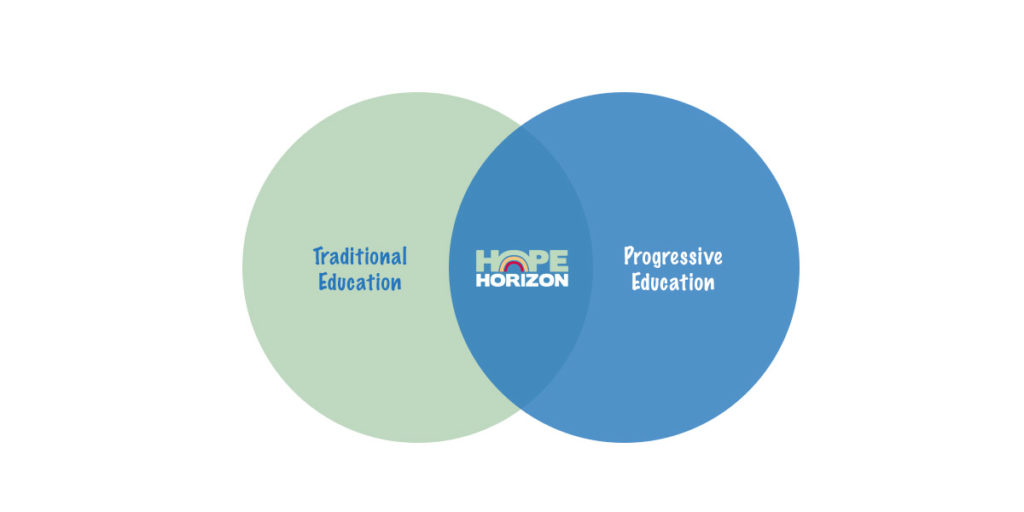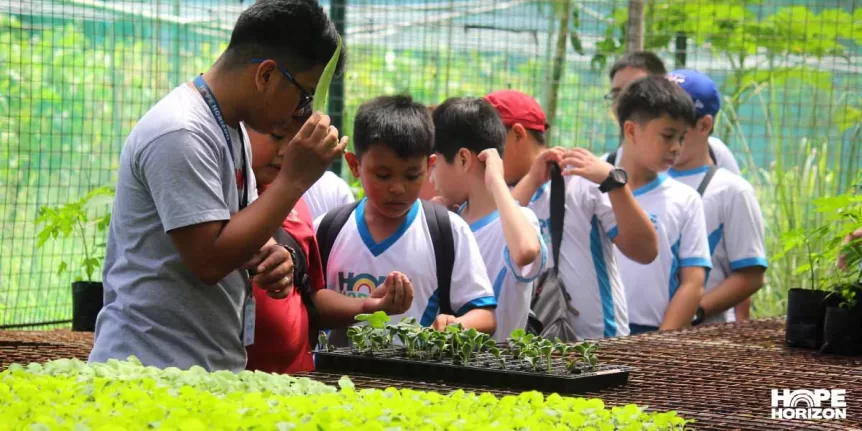Both the Traditional Approach and the Progressive Approach have their own advantages and disadvantages. There is no perfect philosophy when it comes to education and learning for the simple reason that each child is unique.
Each learner has different abilities, needs, values, motivations and attitudes, and these factors affect the kind of school environment a child will thrive in. ~ Nina Malanay
Hence, when choosing a school, consider your child’s personality and learning style and use it as a guide in determining which learning approach will be the best fit for your child and your family.
Traditional
School is a preparation for life.
Learners are passive absorbers of information and authority.
Teachers are sources of information and authority.
Parents are outsiders and uninvolved.
The program is determined by external criteria, particularly test results.
Knowledge is absorbed through lectures, worksheets, and texts.
Success is competitively based, derived from recall and memory, and specific to a time/place.
School is a task to be endured.
Progressive
School is a part of life.
Learners are active participants, problem solvers, and planners.
Teachers are facilitators, and guides who foster thinking.
Parents are partners in goal setting, and planning, and serve as resources.
The program is determined by its mission, philosophy, and goals for graduates.
Knowledge is constructed through play, direct experience, and social interaction.
Success is determined through application over time, and through collaboration.
School is a challenging and fun part of life.

Approach to Learning
In progressive education, the focus is on learning by doing and experiential learning. Students are encouraged to explore and discover concepts through hands-on activities and projects. In traditional education, the focus is on the transmission of knowledge from teacher to student through lectures and textbooks.
Curriculum
In progressive education, the curriculum is often more flexible and student-centered, with a focus on developing critical thinking skills and creativity. Traditional education typically follows a set curriculum that is based on a standard set of subjects.
Teacher-Student Relationship
In progressive education, the teacher acts more as a facilitator or guide, while in traditional education, the teacher is the primary source of knowledge and authority.
Classroom Environment
In progressive education, the classroom environment is often more collaborative and less hierarchical, with an emphasis on group work and discussion. In traditional education, the classroom is typically more structured and teacher-led.
Assessment
In progressive education, assessment is often more focused on formative assessments that provide feedback for improvement, rather than just grades. Traditional education often relies on summative assessments that are used to evaluate student performance and assign grades.
Overall, progressive education is focused on providing a more student-centered and hands-on approach to learning, while traditional education is more focused on a teacher-centered approach with a fixed curriculum and emphasis on standardized testing.
Progressive Education in Post-Pandemic World
Progressive education is well-suited for the post-pandemic world for several reasons:
Flexibility: Progressive education is focused on adapting to individual student needs and interests. This flexibility can be applied to the changing circumstances of the post-pandemic world, such as online learning and remote work.
Resilience: Progressive education values skills such as critical thinking, problem-solving, and creativity, which are essential for adapting to new situations and finding innovative solutions to challenges.
Collaboration: Progressive education emphasizes collaboration and teamwork, which are important skills in the post-pandemic world where remote work and virtual communication are becoming increasingly common.
Adaptability: Progressive education encourages students to think creatively and outside the box, which helps them to adapt to changing circumstances and find new ways of approaching problems.
Empowerment: Progressive education empowers students to take an active role in their learning and to become agents of change in their communities. This sense of agency and empowerment is particularly important in the post-pandemic world where many people feel a sense of uncertainty and disempowerment.

